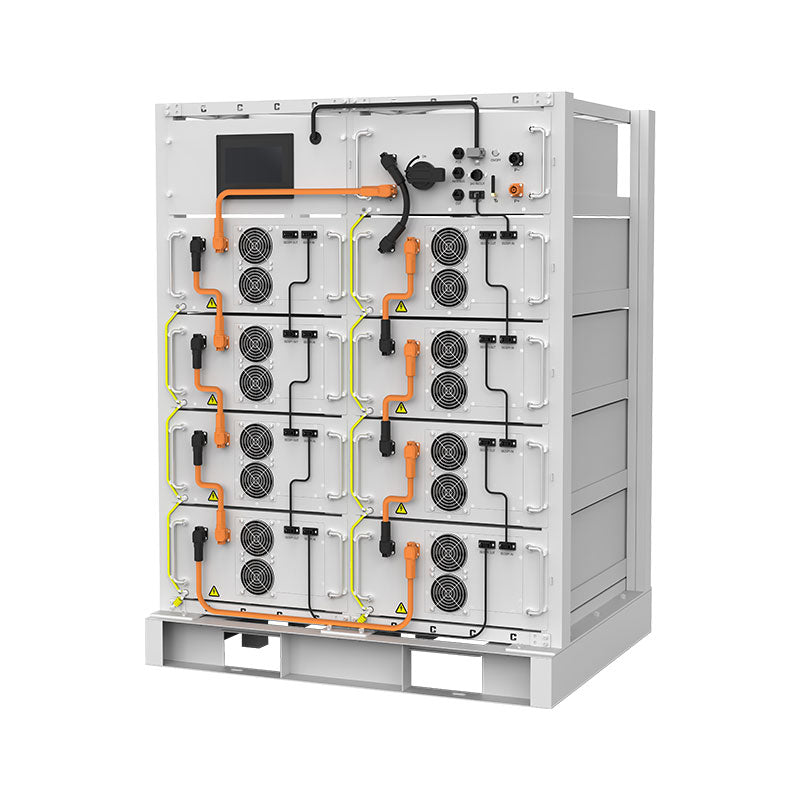Solar energy offers a powerful path to energy independence and a sustainable future. Choosing the right solar system configuration is a critical decision, influencing everything from your initial investment to your long-term energy security. This guide simplifies the complexities of solar power system design, focusing on the three primary configurations: grid-tied, off-grid, and hybrid systems. You will gain a clear understanding of how each system operates, its distinct advantages and limitations, and what factors guide your choice.
Understanding Solar Power Foundations
Solar photovoltaic (PV) systems convert sunlight directly into electricity. The basic building block is the PV cell, a semiconductor device that transforms solar energy into direct-current (DC) electricity. PV cells are interconnected to form modules, several of which can be linked to provide power from a few watts to hundreds of megawatts. PV systems typically require an inverter, which transforms the direct current (DC) from the PV modules into alternating current (AC), as most usages run on AC.
The International Energy Agency (IEA) highlights the immense potential of solar energy, noting that enough sunlight strikes the earth in just 90 minutes to meet the planet's energy needs for an entire year. This abundance, coupled with rapidly falling costs and technological improvements, drives the unprecedented growth in solar generation capacity. In 2023 alone, solar PV capacity accounted for three-quarters of the 510 GW of renewable energy added globally, and it is projected to become the largest renewable energy source by 2029.
Grid-Tied Solar Systems: Connecting to the Mains
Grid-tied solar systems, also known as on-grid systems, connect directly to the public utility grid. They operate in parallel with the grid, allowing you to draw electricity from the utility when your solar panels are not producing enough power, and send excess electricity back to the grid when your production exceeds your consumption.
How Grid-Tied Systems Operate
Your solar panels convert sunlight into DC electricity. This DC electricity flows into a grid-tied inverter, which converts it into AC electricity that matches the grid's frequency and voltage. This AC power then flows into your home's electrical panel, powering your appliances. Any surplus electricity automatically feeds into the utility grid. A net meter tracks the electricity you consume from the grid and the electricity you send back, often resulting in credits on your utility bill through net metering programs. Grid-tied systems require one or more inverters to inject their electrical output into the mains. The components associated with this delivery process, such as inverters, transformers, electrical protection devices, wiring, and monitoring equipment, are all considered part of the “balance of system” (BOS).
Advantages and Considerations
- Cost-Effective: Grid-tied systems often have lower upfront costs compared to off-grid solutions as they typically do not require battery storage.
- Reliable Power: You always have access to electricity from the utility grid, ensuring continuous power supply.
- Financial Benefits: Net metering can significantly reduce or even eliminate your electricity bills, and you may earn credits for excess energy production.
- System Integration: As variable renewable energy (VRE) like solar increases its share, appropriate technical grid connection rules become critical to ensure VRE plants do not negatively impact the local quality and reliability of electricity supply. Modern solar PV plants' operational behavior is controlled via software, offering opportunities to configure responses to grid disturbances.
A key consideration for grid-tied systems is their reliance on the utility grid. If the grid experiences an outage, your solar system will typically shut down for safety reasons (anti-islanding) unless you have a specific backup solution integrated.
Off-Grid Solar Systems: True Energy Independence
Off-grid solar systems operate entirely independently from the utility grid. They are self-sufficient energy solutions, ideal for remote properties where grid connection is impractical or too expensive. These systems require energy storage to ensure power availability during periods without sunlight.
Components and Functionality
An off-grid system includes solar panels, a charge controller, a battery bank, and an off-grid inverter. The solar panels generate DC electricity, which the charge controller regulates before storing it in the battery bank. The battery bank acts as your energy reservoir, providing power when the sun is not shining. The off-grid inverter then converts the DC power from the batteries into AC power for your home's use. Off-grid systems inherently require an electricity storage device, such as a battery, for backup power.
Our commitment to reliable and scalable energy solutions drives our focus on advanced energy storage. Our LiFePO4 (Lithium Iron Phosphate) batteries offer high performance, safety, and reliability, making them an excellent choice for robust off-grid applications. Lithium-ion batteries are a significant innovation in off-grid and edge-of-grid applications, driving enhanced system performance.
Advantages and Challenges
- Complete Independence: You control your energy supply and are not subject to utility outages or fluctuating electricity prices.
- Environmental Impact: You operate with a minimal carbon footprint, relying solely on renewable energy.
- Ideal for Remote Locations: Off-grid solutions eliminate the need for costly trenching and utility line extensions.
However, off-grid systems come with higher initial costs due to the need for a substantial battery bank and often a backup generator. You must carefully manage your energy consumption, especially during extended cloudy periods, to avoid depleting your battery reserves. Accurate sizing of the system and battery capacity is crucial for consistent power.
Hybrid Solar Systems: The Best of Both Worlds
Hybrid solar systems combine the benefits of grid-tied and off-grid configurations. They connect to the utility grid while also incorporating battery storage. This setup offers the security of grid connection with the added resilience and independence of battery backup.
Flexible Energy Management
In a hybrid system, solar panels generate electricity, which can either power your home directly, charge your batteries, or be sent to the grid. When solar production is low, your home can draw power from the batteries or the grid. During a grid outage, your system can seamlessly switch to battery power, providing essential backup. This flexibility allows for optimized self-consumption, reducing reliance on grid electricity and maximizing your solar investment.
Hybrid PV systems can play a key role in providing grid balancing mechanisms and contribute to frequency stabilization. The International Energy Agency (IEA) notes that battery energy storage will become the fastest-growing power system flexibility source by 2050.
We offer integrated household energy storage systems (ESS) that combine lithium batteries, hybrid inverters, and solar panels into a cohesive unit. This integrated approach simplifies installation and optimizes energy flow, providing a comprehensive solution for your energy needs.
Hybrid System Benefits
- Energy Security: You have backup power during grid outages, unlike standard grid-tied systems.
- Reduced Grid Reliance: Batteries store excess solar energy, allowing you to use more of your self-generated power and reduce purchases from the grid.
- Peak Shaving: You can use stored energy during peak utility rates, saving money.
- Grid Support: Hybrid systems can contribute to grid stability and flexibility.
The main challenge with hybrid systems is their higher complexity and initial cost compared to simple grid-tied setups, due to the inclusion of batteries and a more advanced inverter.
Choosing Your Ideal Solar System Configuration
Selecting the right solar system requires evaluating your specific circumstances and priorities. Consider these factors:
- Location: Are you connected to a reliable utility grid, or is your property remote?
- Energy Consumption: How much electricity do you use daily, and what are your peak demands?
- Budget: What is your upfront investment capacity?
- Desired Independence: How important is it for you to have power during grid outages or to be completely self-sufficient?
- Local Regulations: Understand net metering policies and grid connection requirements in your area.
Here is a comparison to help guide your decision:
| Feature | Grid-Tied System | Off-Grid System | Hybrid System |
|---|---|---|---|
| Grid Connection | Connected | Independent | Connected (with backup) |
| Battery Storage | Optional (for backup) | Required | Required |
| Energy Independence | Low (relies on grid) | High (self-sufficient) | Medium to High |
| Grid Outage Protection | No (unless with specific backup) | Yes | Yes |
| Complexity | Low | High | Medium to High |
| Initial Cost | Lowest | Highest | Medium to High |
| Ideal Use Case | Urban/Suburban homes with stable grid | Remote properties, cabins | Homes desiring backup, energy optimization |
Innovations in Solar and Energy Storage
The solar and energy storage sectors are experiencing rapid advancements, enhancing the efficiency, reliability, and accessibility of solar power. Our years of experience in the solar industry position us to deliver cutting-edge solutions. We specialize in lithium battery manufacturing, energy storage systems, and integrated ESS development.
Our core products, such as high-performance LiFePO4 batteries, provide safe and reliable energy storage. These batteries are crucial for both off-grid and hybrid solar solutions, offering superior cycle life and depth of discharge compared to traditional battery technologies. Additionally, our solar inverters efficiently convert DC solar power into usable AC electricity, a vital component for all system types. We also provide comprehensive off-grid solar solutions, tailored for homes, farms, and various remote applications, enabling complete energy independence.
The integration of variable renewable energy (VRE) like solar introduces supply variability, which requires increasing the flexibility of the entire power system. This involves leveraging dispatchable generation, grid enhancements, increased storage, and demand response. Our focus on integrated ESS and advanced battery technology directly addresses these needs, contributing to a more flexible and resilient energy infrastructure.
Empowering Your Energy Future
Selecting the appropriate solar system configuration is a foundational step towards securing your energy future. Whether you prioritize cost savings, complete independence, or a balanced approach, a solar solution exists for your unique needs. As a provider of reliable and scalable energy solutions, we are here to help you navigate these choices, ensuring you achieve true energy independence and contribute to a sustainable planet.





Leave a comment
All comments are moderated before being published.
This site is protected by hCaptcha and the hCaptcha Privacy Policy and Terms of Service apply.